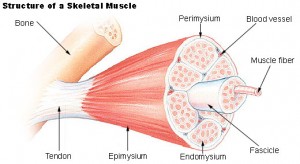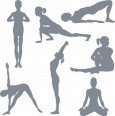10 Ways to Maximize the Benefits of Your Massage
by Amy Angaiak, LMT

The practice of massage has been around for thousands of years and is becoming widely known today for its therapeutic benefits. Here are just some of the reasons massage contributes to our overall well-being:
• It promotes relaxation
• Reduces stress & tension
• Helps alleviate pain
• Increases healing response after injury
• Supports chiropractic care in aligning the spine
• Increases circulation of blood & lymph
• Assists in range of motion & flexibility of joints
• Helps break pain patterns such as recurring tension headaches or sciatica.
There are many types of bodywork, but massage can be generally defined as a physical manipulation of the soft tissues of the body. Many of my clients have wondered: What exactly does massage do? How can I get the most out of my massage? In this piece of writing, I will address these questions. Hopefully you will have a good understanding & visualization of how massage effects your body & how you can get your results to last longer.
Muscles & Fascia

Good muscle tone should feel fairly soft, pliable & pain free. Due to over-exertion, injury/trauma, surgery, chronic stress, postural distortion, lack of exercise, nerve impingement, nutritional deficiency, or other imbalances, the muscles tighten, go into spasm (a group of muscle fibers that contract & cannot relax), and shorten from adhesions & possibly scar tissue. This poor muscle tone feels dense, fibrous, & rigid. This hypertonic quality, if prolonged, can lead to weakness & susceptibility to injury, a build-up of calcium deposits, a reduction in the range of motion, and becoming more prone to spinal misalignment, illness, disease & general pain.
Each muscle cell, fascicle (bundle of muscle cells/fibers) & muscle group is wrapped in a connective tissue called fascia. Fascia serves as a shock absorber, protection & support for the muscles. Overuse, tension & every day strains leads to a thickening of the fascia. This is problematic because fascia is also responsible for creating space for blood vessels, nerves, & fluids to pass. According to John Barnes, P.T., fascial restrictions can create a pressure of up to 2000 pounds per square inch! This kind of pressure can cause dehydration, ischemia (low blood flow) & compression of the nerves.
How Massage Works
Whether your muscles feel relaxed or stiff right now, it is largely a result of muscle memory. The muscles can be described as having little minds of their own & their “brain” is called a proprioceptor. Located in the belly of the muscle, they are called spindle cells and monitor the length of the muscle. Proprioceptors in the tendons are called Golgi tendon organs and detect & respond to changes in muscle tension. Now let’s say you sit at a desk and work on a computer for eight hours a day. Several muscles in the back must be kept in a constant state of contraction to maintain your position. The proprioceptors are communicating to the brain to keep the muscles in this contracted state. Gradually, the spindle cells accept this shortened state as the norm and stay tense. This chronic tension can manifest lower back pain and/or neck & shoulder pain. Instead of taking pain medication to mask your symptoms, getting massage treatments can help address the root cause of your discomfort.
When you are getting your massage, your practitioner is warming up & rehydrating the tissues, calming the nervous system, and re-educating those little muscle brains where its natural resting length really is. The fibrous adhesions begin to break up & the proprioceptors start to form new muscle memory that allows for a lengthening of the muscle. If tension patterns have been persistent for many years, it takes more time & a dedicated effort to get the proprioceptors to forget that long-held tension pattern. If you have never had massage before, or it has been a long time since your last session, it is a good idea to get several sessions fairly close together to work through the layers of tension, release the problem areas and the muscles start to become & stay more pliable & flexible over time. Massage can then be less frequent and becomes an excellent tool for preventative maintenance.
Making the Most of Your Massage
Getting a massage is an investment in your health & well-being as well as a commitment of both time & money. How can you make the most of this investment? There are several things you can do to enhance the benefits of massage.
 1. Stay hydrated.Drink plenty of water on a daily basis and particularly before & after your massage. The muscles & connective tissue need to stay hydrated to function efficiently because more oxygen & nutrients are getting to the cells and more toxins, by-products & waste are released. If you are dehydrated both going into the massage & afterwards, the toxins & waste that are released stagnates and unnecessarily prolongs soreness. Some soreness is common, especially with sports massage or deep tissue techniques, but clears out in a day or two and you should be feeling better than before your massage.
1. Stay hydrated.Drink plenty of water on a daily basis and particularly before & after your massage. The muscles & connective tissue need to stay hydrated to function efficiently because more oxygen & nutrients are getting to the cells and more toxins, by-products & waste are released. If you are dehydrated both going into the massage & afterwards, the toxins & waste that are released stagnates and unnecessarily prolongs soreness. Some soreness is common, especially with sports massage or deep tissue techniques, but clears out in a day or two and you should be feeling better than before your massage.
2. Communicate with your therapist. Let your massage practitioner know of your health history. Some conditions are contraindicated for massage so if you have any concern, get the okay from your doctor before scheduling a session. The goal of your therapist is to address your specific needs. As they are working, speak up if they are using too much pressure or if you are uncomfortable due to the environment because then they can adjust technique, pressure, lighting or warmth to suit your individual preference. Some people can tolerate more pressure while others despise it & the muscles react by tightening even more. Your therapist can’t always tell when they are working on a sensitive area unless you tell them. Your therapist is there for you so give them feedback & guide them to tailor your session for the best outcome.
 3. Keep moving & stretching. Exercise is crucial for healthy muscles & bones. Through movement, muscles strengthen, joints are lubricated, blood circulation increases, flexibility increases, lymph gets circulated thus boosting the immune system, and is an excellent stress reliever. Stretching is important because it trains the muscles to elongate to its proper resting length, as I discussed earlier. Stretches that are held long enough encourages the spindle cells to become accustomed to the new length & allows for the fascia to unwind as well. Injuries often result from a quick, unexpected movement & if there is little flexibility, a tear will occur. However, if you are consistent with stretching, the muscles have more give & would be less likely to tear.
3. Keep moving & stretching. Exercise is crucial for healthy muscles & bones. Through movement, muscles strengthen, joints are lubricated, blood circulation increases, flexibility increases, lymph gets circulated thus boosting the immune system, and is an excellent stress reliever. Stretching is important because it trains the muscles to elongate to its proper resting length, as I discussed earlier. Stretches that are held long enough encourages the spindle cells to become accustomed to the new length & allows for the fascia to unwind as well. Injuries often result from a quick, unexpected movement & if there is little flexibility, a tear will occur. However, if you are consistent with stretching, the muscles have more give & would be less likely to tear.
4. Increase your body awareness. When you get a massage, you become more in tune with your body. Our bodies often get our attention through pain or discomfort. It’s trying to tell you something isn’t working & needs to be corrected. For example, poor posture is the culprit for all kinds of aches & pains because gravity is always bearing down on us & any deviation from correct alignment causes extra strain & pressure on our bodies just to stay upright. If you have a pain in your upper back, it may mean that you are slouching & the weight of your head out of alignment is causing strain in the upper back. Through body awareness, you can create better postural habits, the pain dissipates, and there’s less work for your massage therapist. ☺
5. Be more conscious about efficiency of movement. As we move through our day, we often are exerting more energy than is actually needed & this contributes to unrelenting tension & the kind of muscle memory we are trying to avoid. For instance, when you are typing on your computer, notice how you are holding your shoulders. Are they bunched up around your ears? Is it necessary to be contracting these muscles this much? Consciously bring down the shoulders & try to maintain only what muscle tension is necessary to complete your task. Try to become conscious not only of how you are holding your body (posture) but also how you are moving through space & try to make it as effortless as possible. Repetition of good habits, though often arduous at first, will pay off by becoming second nature.
 6. Breathe & eat well. When we are getting enough oxygen & proper nutrition, our bodies can function as they are supposed to. You probably already know how important oxygen is to our bodies, we don’t last long without it. When you your cells don’t get enough oxygen, this leads to hypoxia or, in a worst case scenario, anoxia. Hypoxia is a reduction of oxygen to cells and impairs the ability to carry out metabolic processes. Muscle cells can function anaerobically (without air) for a short time but produces excess lactic acid that can build up in the muscles and cause fatigue & cramping. Anoxia is absolute oxygen deprivation & the affected cell actually dies. Some muscle tension is due to nutritional deficiencies, such as a shortage of magnesium, calcium, potassium or vitamins B, C, D or E. A diet of processed foods will cause an acidic environment in the body and then excessive amounts of toxins build up thus causing pain in the muscles & joints. Eating a lot of processed foods can lead to extra weight on our skeletal frames and causes strain & misalignment. Naturopaths & nutritionists can help facilitate a diet that is best for you, but eating more of organic, fresh, whole foods is a good place to start!
6. Breathe & eat well. When we are getting enough oxygen & proper nutrition, our bodies can function as they are supposed to. You probably already know how important oxygen is to our bodies, we don’t last long without it. When you your cells don’t get enough oxygen, this leads to hypoxia or, in a worst case scenario, anoxia. Hypoxia is a reduction of oxygen to cells and impairs the ability to carry out metabolic processes. Muscle cells can function anaerobically (without air) for a short time but produces excess lactic acid that can build up in the muscles and cause fatigue & cramping. Anoxia is absolute oxygen deprivation & the affected cell actually dies. Some muscle tension is due to nutritional deficiencies, such as a shortage of magnesium, calcium, potassium or vitamins B, C, D or E. A diet of processed foods will cause an acidic environment in the body and then excessive amounts of toxins build up thus causing pain in the muscles & joints. Eating a lot of processed foods can lead to extra weight on our skeletal frames and causes strain & misalignment. Naturopaths & nutritionists can help facilitate a diet that is best for you, but eating more of organic, fresh, whole foods is a good place to start!
 7. Use exercise therapy. If you really want to boost your progress, begin an exercise therapy routine. (If you have health issues, do so under your doctor’s supervision.) Physical therapists are probably the most competent in determining which exercises you need. Many personal trainers can also assist you in pinpointing weak muscles to focus on. You can empower yourself by simply consulting with your massage therapist or chiropractor or even doing a search on the web & take responsibility for your own well-being. Maybe you have low back pain. This often indicates weak core muscles so starting a pilates or yoga class would benefit you.
7. Use exercise therapy. If you really want to boost your progress, begin an exercise therapy routine. (If you have health issues, do so under your doctor’s supervision.) Physical therapists are probably the most competent in determining which exercises you need. Many personal trainers can also assist you in pinpointing weak muscles to focus on. You can empower yourself by simply consulting with your massage therapist or chiropractor or even doing a search on the web & take responsibility for your own well-being. Maybe you have low back pain. This often indicates weak core muscles so starting a pilates or yoga class would benefit you.
8. Take an Epsoms salt bath. Taking an Epsoms salt bath after your massage can help you enhance the effects bodywork & help avoid soreness. Epsoms salt is made up of magnesium & sulfate. Magnesium helps reduce inflammation & helps with muscle & nerve function. Sulfates aide the flushing of toxins and ease headaches. Add 3-4 pounds of Epsoms salt (about a ½ gallon carton) to a warm bath and soak for at least 20 minutes. Drink plenty of water & rinse off.
9. Use essential oils. Essential oils are very therapeutic for our general health. Oils such as peppermint, lavender, wintergreen, basil, marjoram, or oregano are effective in relieving muscle aches. Some of the properties of these oils include that they are oxygenating, anti-inflammatory, analgesic (pain relieving), and relaxing. You can dilute the essential oil (with massage oil)& rub it into your sore spots, use food-grade oils to add to your water or food, or diffuse them into your room to get the benefits.
 10. Cultivate peace. Stress is unavoidable in this fast paced world. Certain levels of stress can be stimulating & motivating but letting stress overwhelm you is detrimental to your health. Stress causes your Central Nervous System to kick into the “fight or flight” mode or the sympathetic system. This is when our body is flooded with adrenaline, heart rate & blood pressure increase, blood sugar levels rise, breathing becomes shallow & quick, muscles tense up, ready to run or fight off the real or perceived imminent danger (blood actually is pulled away from organs & the digestive system out to the periphery). Our sympathetic system is vital to our survival but if we are spending too much time in this mode, we are more vulnerable to disease, depression, anxiety, digestive issues, sensitivity to pain…the list goes on & on. We want to be in the parasympathetic system, or “rest & digest” mode, as much as possible. This is where the muscles relax, heart & breath rate normalizes, blood returns to the digestive & elimination systems, rest & sleep are supported, & the immune system strengthens (such as white blood cell production re-commences). Stress often originates in the mind so anything you can do to quiet your mind and give your stress an outlet (such as meditation, yoga, singing, getting out in nature, exercise, enjoying music, or just focusing on the breath) is invaluable not only for your muscles but your entire being.
10. Cultivate peace. Stress is unavoidable in this fast paced world. Certain levels of stress can be stimulating & motivating but letting stress overwhelm you is detrimental to your health. Stress causes your Central Nervous System to kick into the “fight or flight” mode or the sympathetic system. This is when our body is flooded with adrenaline, heart rate & blood pressure increase, blood sugar levels rise, breathing becomes shallow & quick, muscles tense up, ready to run or fight off the real or perceived imminent danger (blood actually is pulled away from organs & the digestive system out to the periphery). Our sympathetic system is vital to our survival but if we are spending too much time in this mode, we are more vulnerable to disease, depression, anxiety, digestive issues, sensitivity to pain…the list goes on & on. We want to be in the parasympathetic system, or “rest & digest” mode, as much as possible. This is where the muscles relax, heart & breath rate normalizes, blood returns to the digestive & elimination systems, rest & sleep are supported, & the immune system strengthens (such as white blood cell production re-commences). Stress often originates in the mind so anything you can do to quiet your mind and give your stress an outlet (such as meditation, yoga, singing, getting out in nature, exercise, enjoying music, or just focusing on the breath) is invaluable not only for your muscles but your entire being.
My work as a massage therapist gives me a sense of purpose, that I have something to offer my community. My goal is to help my clients feel better & support them on the path of a living a healthier lifestyle so that they can sustain that good feeling on their own. The effects of a massage are only going to be temporary unless you take an active role in your wellness! I hope you find these 10 tips useful & get the most out of your next massage!

